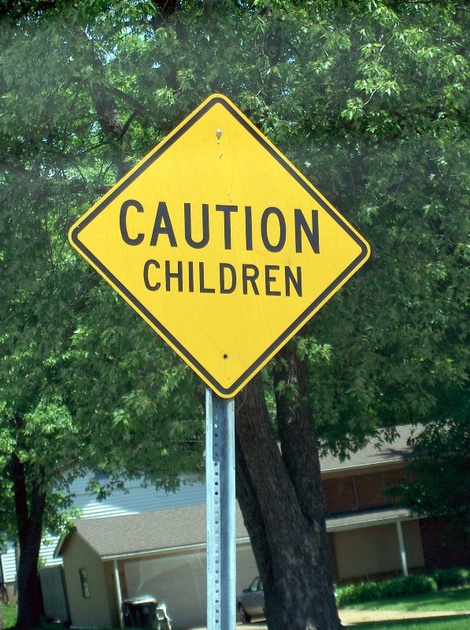
It’s that time of year again. Spring is in the air, summer is soon to follow. Everyone is out more, enjoying the nice weather. Children are playing ball, riding bikes, and maybe opting out of the stuffy school bus and walking home with their friends instead.
Time to talk about safety.
Have you made sure your children wear a helmet when they ride their bike? Check. Talked to them about not darting out into the street after a runaway ball? Check. Talked to them about being careful crossing streets when they walk home? Check.
What about the other kind of safety? Have you talked to them about that? You know, the kind of safety talk that teaches them not just about not talking to strangers, but is a little more nuanced. It’s the talk that includes concepts like good touch, bad touch, and confusing touch. It’s the talk that includes concepts like secrecy, and personal physical safety. It’s the talk that lets them know that it’s not only important to be wary of strangers – although they shouldn’t talk to, get in the car with, or go to strangers – but also fleshes this out a bit more and lets them know that even if the stranger looks like everyone else in the community, or even if it’s someone they actually know – a neighbor, relative, friend’s brother, father, uncle, or anyone who asks them to do something that they know is wrong, or that feels wrong, off, or uncomfortable – should be told NO, and they should immediately tell a trusted adult.
Is this talk getting a check or a check minus?
In reality, this talk should not be confined to this time of year. In the dead of winter when a child only goes back and forth to one friend because it’s too cold to go anywhere else, a safety talk is equally relevant. Even if they only go over to other people’s homes on a limited basis, children need to understand when “respect your elders” trumps what they want to do or don’t want to do and when it doesn’t. It is essential for children to know when telling on someone for doing inappropriate things is a must, and isn’t “making trouble” or “ruining a family.”
Perhaps your children walk home from school the whole year and you need to give them some scenarios to make sure they fully understand when safety comes before all the messages they learn about being kind and helpful. This can be quite confusing for our children, and maybe for adults as well. Ask your children what they would do, for example, if they are walking home and someone frum whom they don’t know flings open their door and calls to them: “Help, my elderly mother fell, please come in and help me!” Do you know what you would want them to do in this scenario? Are you also confused about what the correct response should be from a child being summoned to help a fellow (adult) Jew, but who is also a stranger?
I think it’s that confusion and the feeling of being so unsure of how to proceed that leads parents to put their heads in the sand and just hope blindly that there are mostly good people in our community, and that hopefully my child won’t cross paths with any of the bad ones, and hope that, really, how likely is that?
Generally hope is a good thing – but not if it stops us from being proactive about prevention. We don’t disregard the need for a helmet because we hope our child won’t have a bad accident, or that there won’t be a car coming when our child chases a ball into the street. At this time of year when children are less supervised, in various camp settings, in and out of many more children’s homes, and disappearing for hours at a time because “it’s summer,” the rationalizations that parents use to avoid a talk that makes them anxious may be overridden by reality.
Even when willing to overcome the discomfort and have “the talk,” parents aren’t always sure of what to say or how to prepare their children. Luckily we have some wonderful resources specific to our community, including Rabbi Yaakov Horowitz’s “Let’s Stay Safe,” a great starter book for school-age children. More recently, Debbie Fox, LCSW published a book called “Seminary Savvy,” which examines the safety issues (of all sorts) that our grown young women may face and should be prepared for when they go far away from home.
Most important, though, is the opportunity these books give parents to become more comfortable in understanding these issues, and in handling them and discussing them with our children. Children sense a parent’s reluctance to discuss certain topics. When we, as parents, are, in fact, overwhelmed or feeling lost about this topic, a child who faces this kind of danger will worry about bringing it up to his or her parent, which makes the possibility for the situation and the secret to fester and continue. So whether it’s a book you read to your child and then discuss, or a book you read first and then have your child read it and discuss it together, the open dialogue created will be your child’s best protection in whatever they do or iy”H don’t encounter.
 Previous
Previous

